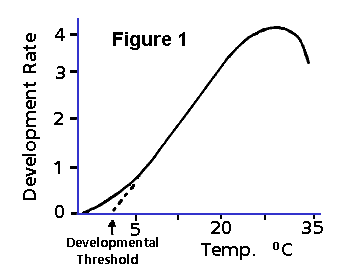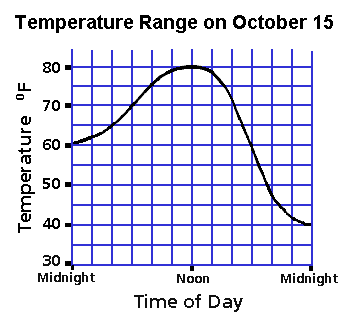The Concept of Physiological Time
Since insects are cold-blooded animals (poikilotherms) their rate of growth and development is proportional to ambient temperature. At very low temperatures, there is no development at all. As temperature increases, there is some point (different for various species) at which development begins to occur.  This low-temperature “gate” is called the Developmental Threshold. As temperatures increase above the developmental threshold, the rate of insect development gets faster. At high temperatures, development rate levels off and then drops quickly near the upper limit of survival. Figure 1 illustrates the typical relationship between temperature and development time:
This low-temperature “gate” is called the Developmental Threshold. As temperatures increase above the developmental threshold, the rate of insect development gets faster. At high temperatures, development rate levels off and then drops quickly near the upper limit of survival. Figure 1 illustrates the typical relationship between temperature and development time:
Similar insects reared at different temperatures will require different amounts of time to complete development. Cooler temperatures retard development; warmer temperatures stimulate development. Since the relationship between temperature and development rate is linear through a wide range of temperature, it is possible to predict how long development will take at each different temperature.


